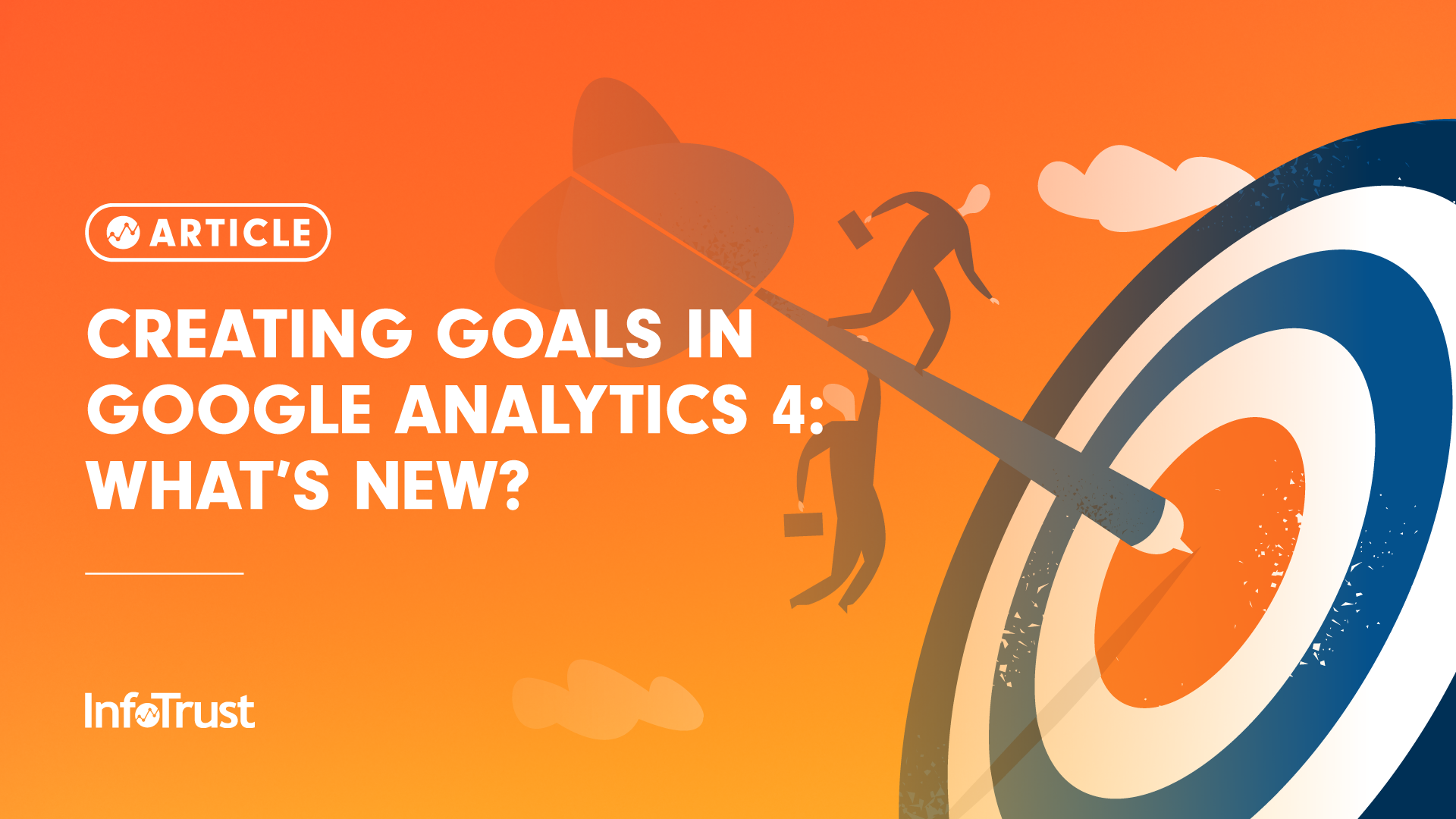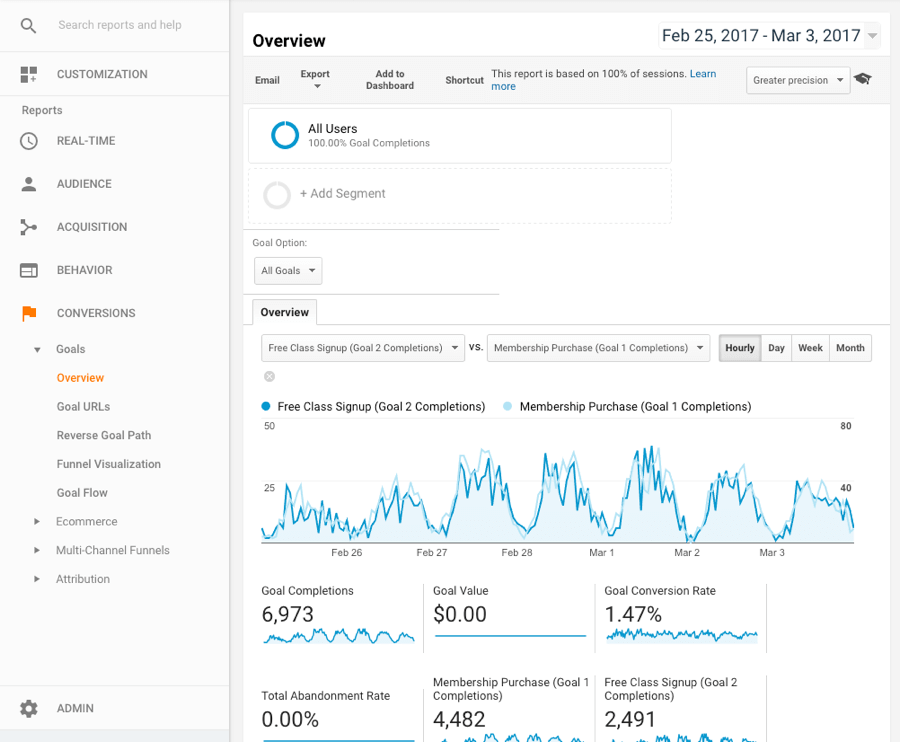Recognizing What Data Is Google Analytics Goals Unable to Track
Recognizing What Data Is Google Analytics Goals Unable to Track
Blog Article
Discover the Limitations of Google Analytics Goals: Introducing the Information Types That Remain Untrackable
As businesses increasingly count on data-driven decision-making, comprehending the constraints of devices like Google Analytics ends up being extremely important. While Google Analytics Goals deal important understandings into customer interactions, there exist information kinds that thwart tracking, posturing challenges to an extensive understanding of user behavior.
Incomplete Individual Journey Tracking
Insufficient customer journey monitoring within Google Analytics can prevent the capacity to accurately evaluate user actions. When the individual trip is not fully tracked, there are spaces in the information that avoid a thorough understanding of just how users communicate with a website. This lack of insight can cause missed out on chances for optimization and enhancements to the individual experience.
One common problem with insufficient user journey tracking is the lack of ability to see the full path that customers take in the past finishing a goal or leaving the site. Without this details, it is testing to determine where users might be encountering challenges or friction points that avoid them from transforming. In addition, incomplete monitoring can obscure the effect of certain advertising efforts or web site changes on individual behavior.
To resolve this limitation, it is important to establish up correct monitoring mechanisms within Google Analytics to record the entire user journey. This may involve establishing event monitoring, objective funnels, or utilizing tools like Google Tag Supervisor to ensure that no vital interactions go unrecorded. By gaining a detailed sight of the individual trip, website proprietors can make more enlightened choices to boost customer engagement and drive conversions.
Acknowledgment Difficulties
Navigating through acknowledgment difficulties in Google Analytics needs a complete understanding of how different touchpoints add to the total conversion procedure. Acknowledgment challenges emerge from the complexity of modern-day consumer trips, where individuals connect with multiple channels before converting. Google Analytics gives different attribution versions like initial touch, last touch, and straight, each supplying a various perspective on just how credit rating is designated to touchpoints along the conversion path. These versions might not always properly mirror the real influence of each touchpoint on the conversion.
One typical acknowledgment obstacle is the problem in connecting conversions to the right resource, specifically in cases where users connect with numerous channels before converting. This can lead to inaccuracies in determining which marketing initiatives are driving one of the most conversions. Additionally, cross-device tracking poses one more attribution difficulty, as individuals frequently change in between tools during their journey, making it testing to track their communications seamlessly. Online marketers need to thoroughly assess and interpret acknowledgment information to make educated choices and enhance their advertising and marketing strategies effectively.
Offline Conversions
Given the difficulties associated with attributing conversions accurately in online channels, the measurement of offline conversions provides a considerable chance for online marketers seeking an extra thorough understanding of their clients' trip. Offline conversions describe activities that customers absorb the real over at this website world, such as making purchases in brick-and-mortar shops or over the phone, participating in occasions, or engaging with published materials - what data is google analytics goals unable to track. These conversions are essential for services that run both online and offline, as they offer important insights into the performance of advertising campaigns across various touchpoints
Tracking offline conversions commonly presented a substantial difficulty for online marketers, as it was testing to attach these actions back to details on the internet interactions properly. Nonetheless, with innovations in innovation, such as the combination of CRM systems, unique identifiers, and promo code codes, organizations can currently link the gap between online and offline information to get a much more holistic view of consumer habits. By efficiently measuring offline conversions, marketers can maximize their strategies, assign sources extra effectively, and ultimately improve the general client experience.
Cross-Device Monitoring
Cross-device tracking plays a critical duty in comprehending the interconnected nature of consumers' electronic communications across several tools. In today's omnichannel globe, where users perfectly switch between tablet computers, smartphones, and desktop computers, tracking their behavior throughout these devices is essential for marketing professionals to acquire a detailed view of their consumer trip.

Furthermore, privacy concerns and laws such as GDPR and CCPA have even more complex cross-device monitoring. With users requiring more control over their information and boosted limitations on tracking technologies, online marketers have to locate innovative and privacy-compliant methods to link customer interactions throughout tools.
Dynamic Web Content Involvement
Understanding customer interaction with dynamic content is critical in optimizing digital advertising and marketing strategies for enhanced target market interaction. Dynamic content refers to web site elements that change based upon user behavior, preferences, or various other elements, using a tailored experience. link Nonetheless, tracking customer communications with dynamic material poses challenges for traditional analytics devices like Google Analytics.
While Google Analytics can track standard interactions like clicks and web page sights, it may battle to catch more nuanced engagements within vibrant web content. what data is google analytics goals unable to track. Metrics such as time invested in specific dynamic aspects, hover activities, or communications within pop-ups are typically not quickly quantifiable using conventional monitoring approaches. This constraint prevents marketing experts' capacity to completely comprehend exactly how customers are engaging visit this site right here with vibrant material and tailor their strategies accordingly

Verdict
In verdict, Google Analytics objectives have limitations in tracking incomplete customer trips, attributing conversions properly, recording offline conversions, tracking cross-device interactions, and gauging dynamic content engagement. These constraints highlight the importance of checking out extra tracking approaches and tools to obtain a more detailed understanding of customer actions and conversions past what Google Analytics can give.
While Google Analytics Goals deal beneficial understandings into user communications, there exist information types that elude tracking, posturing difficulties to a comprehensive understanding of individual habits.Insufficient individual trip monitoring within Google Analytics can impede the ability to properly examine individual behavior. When the user trip is not completely tracked, there are voids in the information that protect against a comprehensive understanding of just how customers communicate with an internet site.One usual concern with incomplete user trip monitoring is the inability to see the full course that individuals take in the past completing an objective or leaving the website. By obtaining a thorough view of the user trip, internet site owners can make even more enlightened choices to improve customer interaction and drive conversions.
Report this page